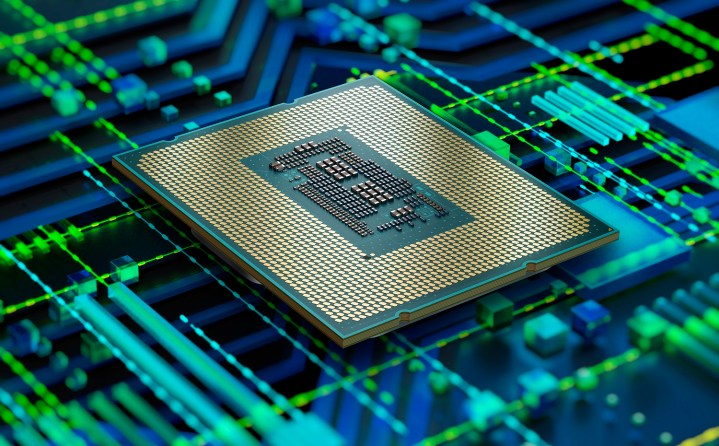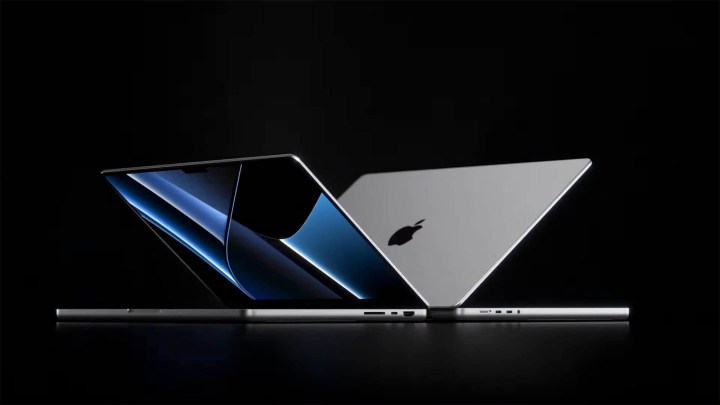There have been two major CPU announcements in the past couple of weeks — Apple’s M1 Pro and M1 Max and today, the Intel 12th-gen Alder Lake platform. Although two different CPU generations with different purposes, Apple and Intel are in hot competition with each other, even if that competition isn’t direct.
These two platforms are more alike than they may seem, which could shift the balance of power in the CPU market. For decades, it has been a matchup between Intel and AMD. Apple is a new competitor in the ring, which is something that Intel recognized with the launch of Alder Lake.
AMD is resting on its laurels, which might pay off in the short term. Going forward, though, hybrid CPU architectures are what will dominate desktop and mobile platforms. Here’s why.
M1 Max and Alder Lake: More alike than different

Intel’s 12th-gen Alder Lake chips and Apple’s M1 range both use hybrid architectures. Sure, Intel uses an x86 instruction set while Apple uses the ARM instruction set, but both ranges of processors drive toward a similar goal: Increase performance and efficiency by putting the right workload on the right core.
If you’re unfamiliar, a hybrid CPU combines performant (P) cores and efficient (E) cores onto a single processor. This design — known as big.LITTLE — was pioneered by chip designer ARM, and you can find it in nearly all mobile devices available today. Apple brought that design to
Intel actually tried this concept a couple of years back with Lakefield, but the range never got off the ground. Intel only made two Lakefield chips, and they only showed up in a few
Although it’s tempting to throw more fast cores at a processor to improve performance, that’s not the best way to go about things. Small workloads, background tasks, and simple calculations don’t need such powerful cores. The result is that P-cores end up sharing bandwidth with low priority tasks instead of focusing resources on the most important tasks at hand.
That’s what makes hybrid architectures different. The P-cores can focus on the big, important tasks while the E-cores handle all of the minute background tasks. The results speak for themselves. Phones now use the latest chip-making technology, not computers, and Apple’s M1 chip — which is basically a tricked-out mobile chip — manages to outperform its Intel predecessors while staying cooler and consuming less power.
Intel sees the writing on the walls. The company hasn’t been shy about pointing out Apple as its true competitor in the future, not AMD. Meanwhile, AMD continues to stick with architectures that focus on fast cores and a lot of them instead of focusing on a hybrid approach.
The true competitor

Intel CEO Pat Gelsinger has made one thing clear since returning to Intel: Apple is the competition, not AMD. In an interview from October, Gelsinger made that crystal: “We ultimately see the real competition [is] to enable the ecosystem to compete with Apple.”
Apple has used its own silicon in mobile devices dating back to the original iPhone. But it wasn’t until the M1 chip replaced Intel’s options in MacBooks, the iMac, and the iMac Mini that Intel started to change its stance. In a recent interview, Gelsinger said that was ultimately a good move. “They moved the core of their product line to their own M1 and, you know, its derivative family because they thought they could do a better chip. And they’ve done a good job with that.”
Gelsinger says the ultimate goal is to “win them back,” which requires making a chip that outperforms the M1 — or whatever future generation Apple is on — with higher efficiency and similar power draw. Apple has little incentive to switch back to Intel. For that, Intel has to make chips that are too good to ignore.
Alder Lake looks like a paradigm shift for Intel, and if leaked benchmarks are accurate, the mobile chips could outperform Apple’s M1 Max. It’s important to recognize that Alder Lake is part of a larger strategy for Intel, though. The company has shared its road map through 2025, and it’s filled with hybrid.
AMD hasn’t been as clear about its roadmap, likely because it doesn’t need to be. With desktop and server leadership, AMD is sitting cozy at the moment. For now, we know that AMD’s next-generation Ryzen 6000 chips won’t use a hybrid architecture. AMD has suggested that hybrid still needs work, and has pointed the finger at hybrid architectures as a marketing ploy to “have a bigger number.”
It’s true that hybrid needs work, mainly to optimize the operating system’s scheduler to handle each core type appropriately. Apple has clearly done some work on that front, and Intel worked with Microsoft to optimize Windows 11 for Alder Lake’s Thread Director feature. We’ll just have to wait until Alder Lake is here to see if that work will pay off.
Regardless, it’s clear Intel is looking forward. Guided by marketing or a chance at market leadership, it doesn’t matter: Intel is driving after Apple, and AMD is still driving after Intel. I don’t know who’s gambit will pay off. But I do know that Apple is leaving Intel and AMD in the dust, and Intel is the only one talking about it right now.
Hybrid is the wave of the future

With the launch of Alder Lake, Intel has shown that hybrid is here to stay. Apple is continuing to develop its own hybrid chips, and Intel will continue doing the same for the next few years. Early murmurs suggest AMD could use a hybrid architecture on its Zen 5 CPUs — the generation after Ryzen 6000 — but that’s a couple of years off, at least.
Intel has made some big claims about Alder Lake — identical multi-threaded performance as 11th-gen chips at less than a fourth of the power, up to a 47% improvement when multi-tasking, and up to double the content creation performance as the previous generation. Some of that is on the back of Intel’s new manufacturing process. However, a lot of it comes from Alder Lake’s high core counts and hybrid architecture.
As long as AMD and Intel are making chips, they’ll be compared to each other. With Intel’s switch to a hybrid architecture, though, it’s clear that the company sees a new challenger approaching — one it used to call a partner. If Intel’s performance claims are true, Alder Lake will take the fight to Apple. And if that battle pays off, AMD will likely follow suit.
Editors' Recommendations
- How Intel and Microsoft are teaming up to take on Apple
- Apple’s M3 Max appears to keep up with Intel’s top desktop CPU
- Intel’s 14th-gen Raptor Lake refresh might be a major disappointment
- Intel’s upcoming iGPU might destroy both Nvidia and Apple M2
- Got an M1 Mac? Apple will now let you repair it yourself





